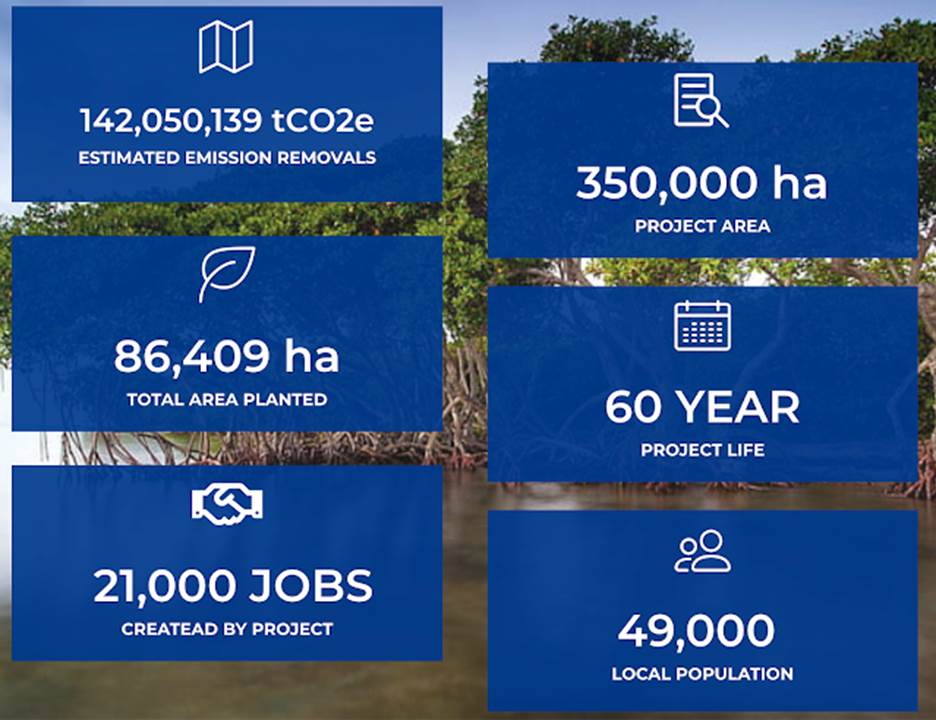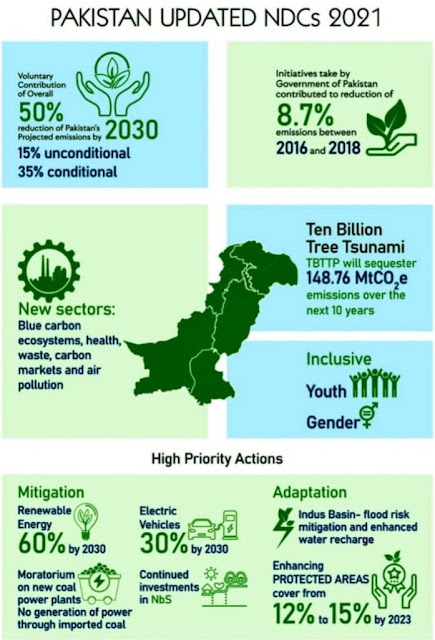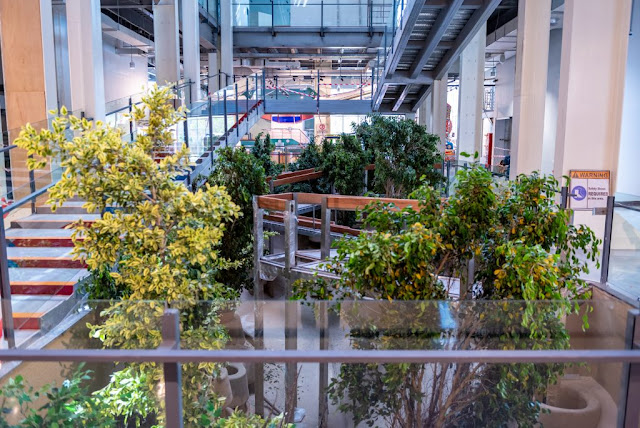COP28: Pakistan Planting World's Largest Mangrove Forest
By Riaz Haq
CA

Pakistan, which contributes less than 1% of global carbon emissions, is among the countries considered most vulnerable to climate change. About a third of the country was devastated by massive floods in 2022.
The nation committed continued pursuit of nature-based solutions to the problem at COP26 in Glasgow in 2021. As part of this commitment, the country is planting one of the world's largest mangrove forests in the Indus River Delta, a key component of its Ten Billion Tree Tsunami campaign launched by former Prime Minister Imran Khan.

|
Pakistan Mangroves Plantation Project - Source Delta Blue Carbon |
Mangrove Forest
Also known as Delta Blue Carbon Project , the mangroves plantation will eventually cover 350,000 hectares of Tidal Wetlands on the south-east coast of Sindh. Currently, Pakistan is estimated to have 600,000 hectares of mangrove forest. Mangroves absorb hundreds of millions of tons of atmospheric carbon, reduce the impact of storms on human lives and economic assets, and provide a habitat for fish, birds and other plants supporting biodiversity. It is funded by sales of carbon credits to global polluting industries such as those involved in fossil fuels trade.

|
Pakistan NDCs (Nationally Determined Contributions) for Climate Goals - Source UN
|
|
Massive Floods of 2022
More than a year after the unprecedented floods of 2022, Pakistan is still dealing with the havoc they wreaked. Over a thousand Pakistanis died. About 33 million people in two southern provinces became homeless. Sindh was inundated with 784% of normal rainfall in the year. Balochistan saw 522% of average rainfall. Both provinces suffered their worst ever heatwave prior to this unprecedented deluge. Nearly a million livestock were lost, over two million acres of farmland came under water and 90% of the crops in Sindh and Balochistan were damaged. It was a massive humanitarian crisis.
Nature-Based Solutions
How are nature-based solutions different from manmade solutions? Here's how the World Bank explains the difference:
"Nature-based solutions are actions to protect, sustainably manage, or restore natural ecosystems, that address societal challenges such as climate change, human health, food and water security, and disaster risk reduction effectively and adaptively, simultaneously providing human well-being and biodiversity benefits. For example, a common problem is the flooding in coastal areas that occurs as a result of storm surges and coastal erosion. This challenge, traditionally tackled with manmade (grey) infrastructure such as sea walls or dikes, coastal flooding, can also be addressed by actions that take advantage of ecosystem services such as tree planting. Planting trees that thrive in coastal areas – known as mangroves -- reduces the impact of storms on human lives and economic assets, and provides a habitat for fish, birds and other plants supporting biodiversity"

|
Karachi Mangroves Exhibit - Source Magnifiscience Center |
Saving Karachi
One of the objectives of restoring mangroves is to prevent a climate disaster in Karachi, Pakistan's largest city and the country's economic hub. Mangroves in Karachi are a unique marine ecosystem fringing the coast, and they provide both a vital spawning area for ocean fish and protection from periodic tsunamis and storm surges.
Karachi's Magnifiscience Center has a special exhibit to help teach citizens the importance of restoring this marine ecosystem. Here's an excerpt from a recent Time Magazine report on the subject:
"On a recent Tuesday morning, several dozen Pakistani school children barreled down a wooden walkway into a thicket of mangroves. They jostled for space at a small viewing platform and eagerly pointed out fish darting between the exposed tree roots. As the rising tide inched ever closer to the crabs and mudskippers resting on shore, the children’s guide launched into a detailed explanation of the unique marine ecosystem fringing the coast, and how it provided both a vital nursery for ocean fish and protection from tsunamis and storm surges. If mangroves are so important, wondered one child out loud, “Why are they in here, and not out there?” By in here, she meant the soaring glass atrium of Karachi’s newly opened MagnifiScience Center, where the high-tech centerpiece is the living mangrove exhibit—complete with real trees, live fish, plastic crabs, and an accelerated tidal ebb and flow maintained by underground water pumps. Out there is the crowded coastal megacity of Karachi, where all but a few of the mangrove forests that once defined this Indus Delta port town have been chopped down, paved over, and developed into ocean-view high-rises, golf courses, and container ports".
(Riaz Haq is a Silicon Valley-based Pakistani-American analyst and writer. He blogs at www.riazhaq.com )

